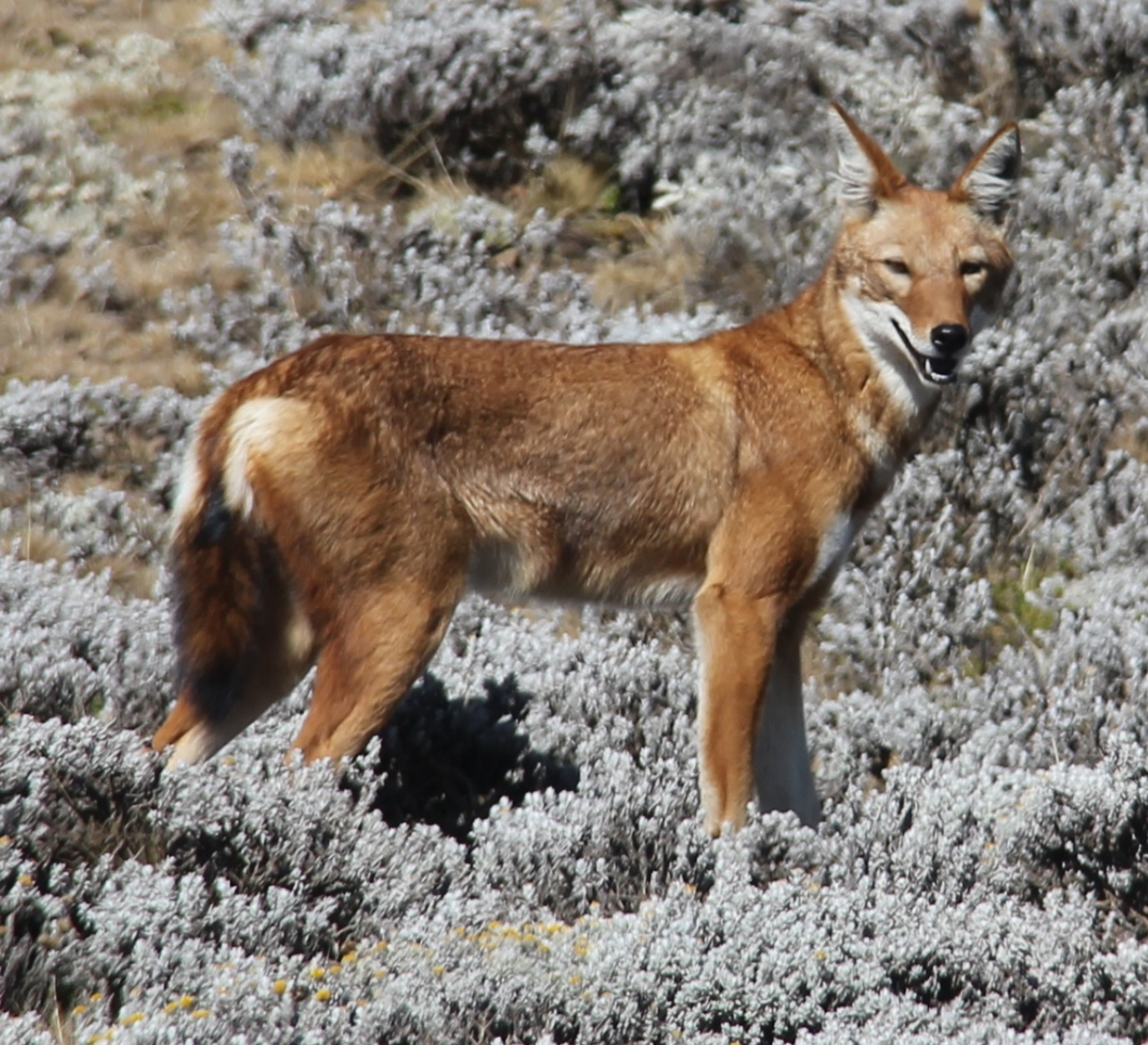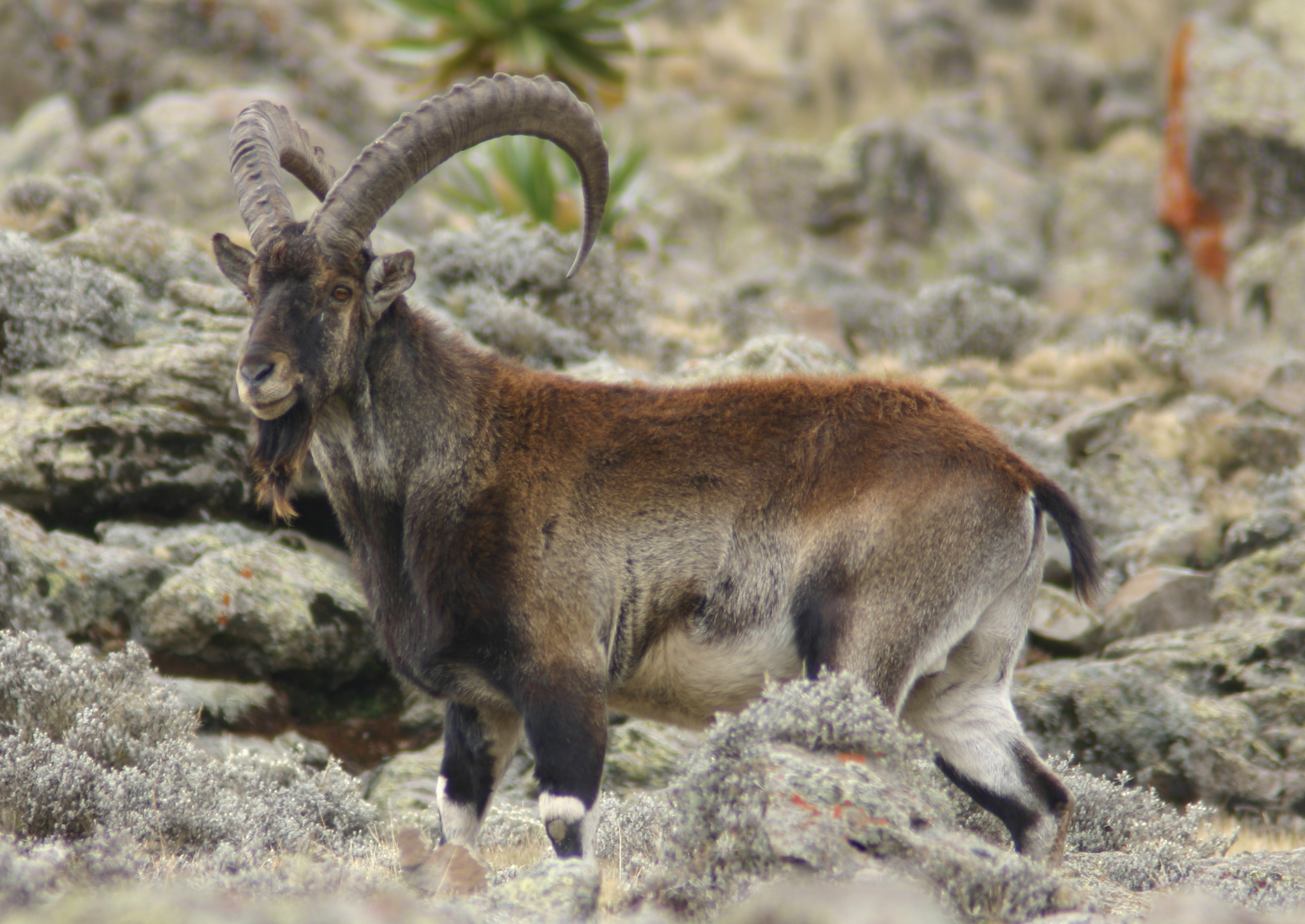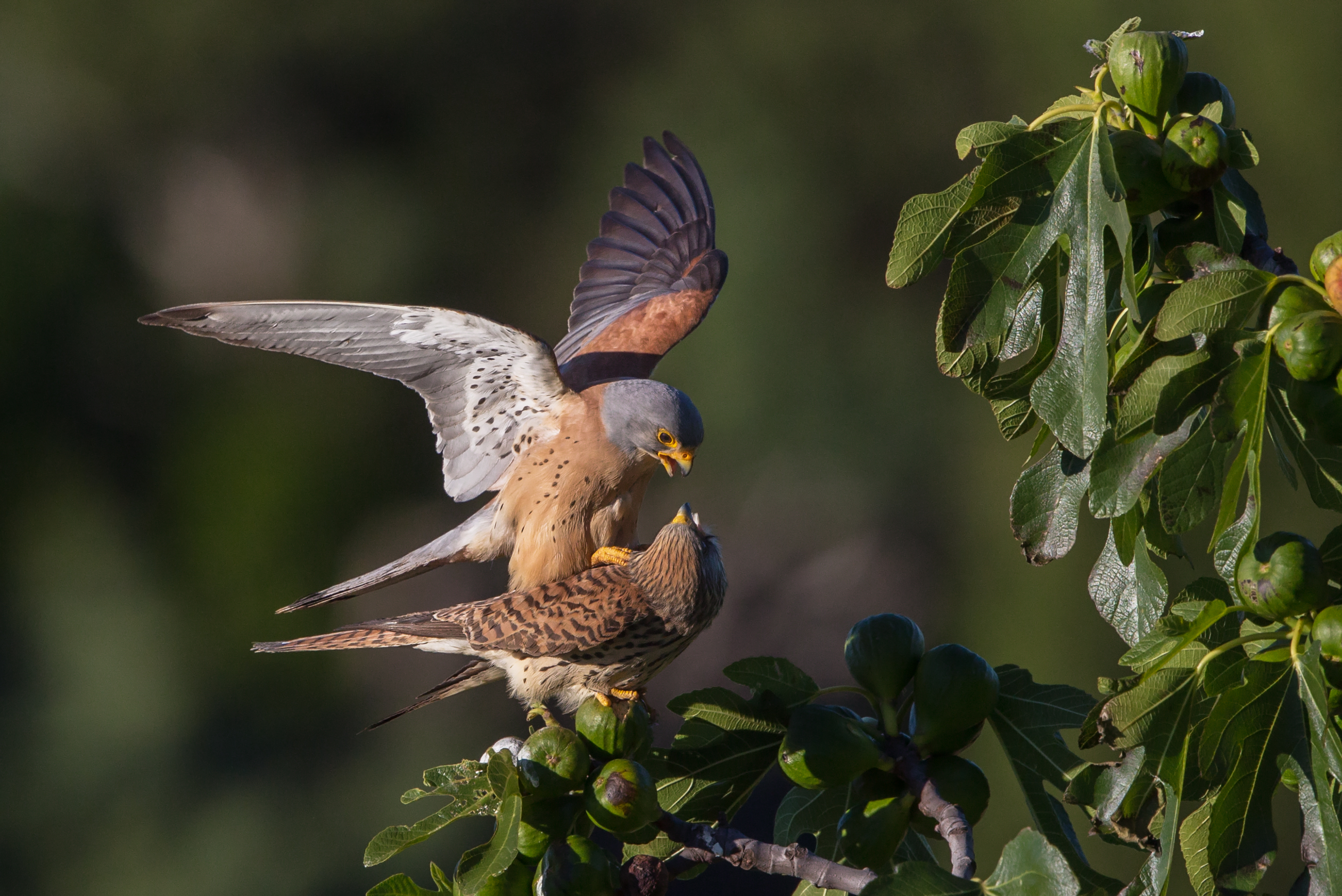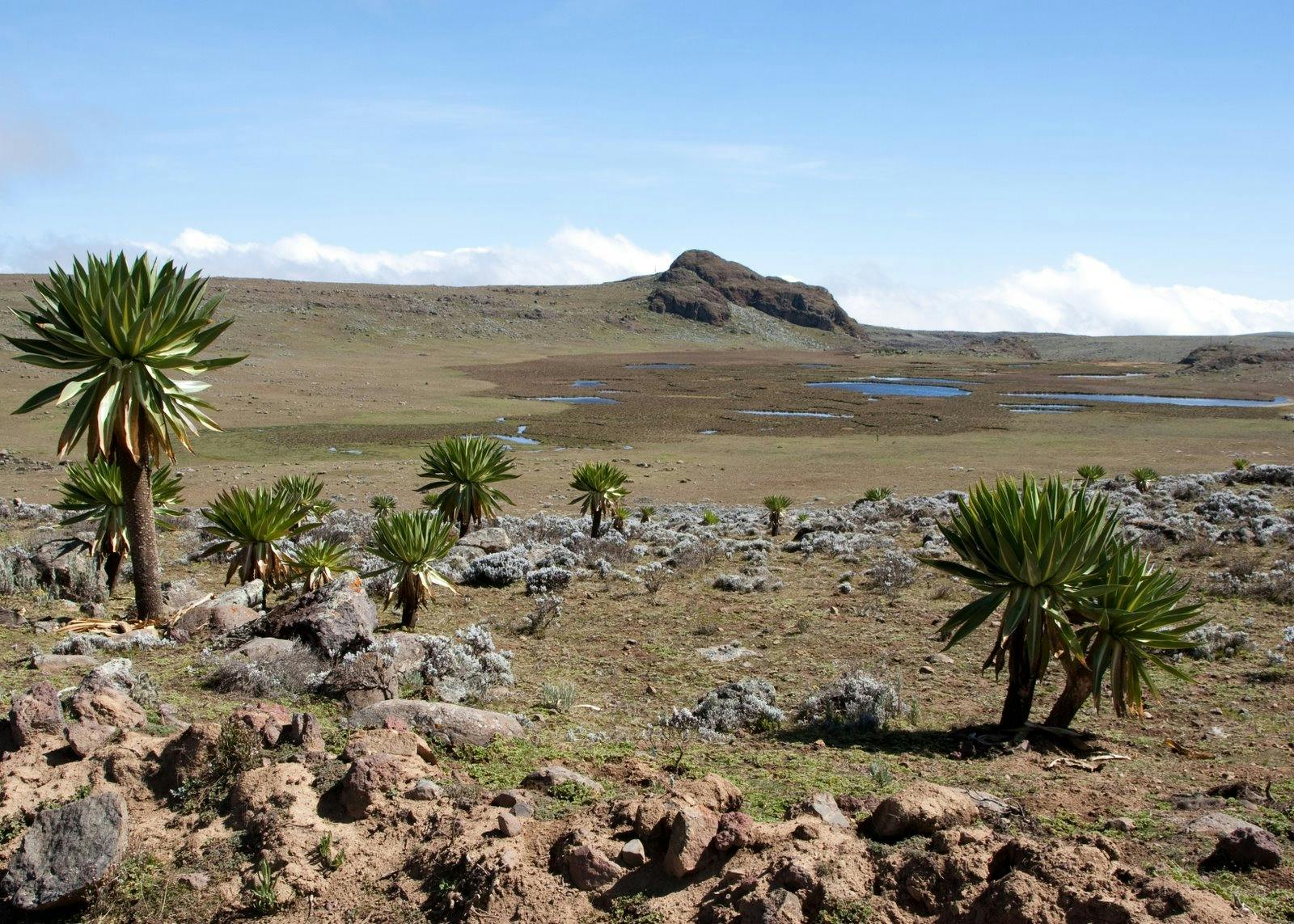Ethiopian Montane Moorlands
The ecoregion’s land area is provided in units of 1,000 hectares. The conservation target is the Global Safety Net (GSN1) area for the given ecoregion. The protection level indicates the percentage of the GSN goal that is currently protected on a scale of 0-10. N/A means data is not available at this time.
Bioregion: Lake Turkana-Sudd Grasslands, Bushlands & Forests (AT21)
Realm: Afrotropics
Subrealm: Horn of Africa
Ecoregion Size (1000 ha):
1,573
Ecoregion ID:
80
Conservation Target:
52%
Protection Level:
7
States: Ethiopia
The Ethiopian wolf is the rarest canid species in the world and the most threatened carnivore in Africa. Confined to Afroalpine heathlands above 3,000 m in Ethiopia’s highlands, the wolves are threatened by habitat loss from settlement and agricultural encroachment as well as diseases. There are less than 500 wolves remaining, with the largest population in Bale National Park. A major cause for their decline is the Canine diseases transmitted from domestic dogs, including rabies and canine distemper syndrome. They are also threatened by persecution from humans and hybridization with domestic dogs.

The Ethiopian wolf (Canis simensis) is the flagship species of the Ethiopian Montane Moorlands ecoregion.
The ecoregion covers the higher parts of the Ethiopian Highlands Massif, from 3,000 m to over 4,500 m. Annual rainfall is highest in the southwest where the dry season may only last for two months, and declines to as little as 1,000 mm in the north, where the dry season may last as long as 10 months. Estimates of the mean maximum temperature on the higher peaks are between 6° and 12°C while mean minimum temperature is below 0°C. Frosts are common throughout the year, especially in the winter months.
The volcanic highlands were divided into two parts by the development of the Rift Valley around 13 million years ago, and volcanic activity ended 4 to 5 million years ago. During the last ice age, thick glaciers covered this ecoregion. As the climate warmed around 10,000 years ago, the ice melted and alpine vegetation moved to ever-higher altitudes. Ice remained on the peaks of the highlands until a few thousand years ago.
-CC-Charles%20J%20Sharp-2017.jpg)
Giant mole rat. Image credit: Charles J Sharp, Creative Commons
Trees are absent at such high elevations in the ecoregion, although some bushes and shrub such as Hypericum revolutum occur. Much of the montane vegetation is a heathland scrub around 0.5–1.0m high, dominated by the tree heathers Erica trimera and Erica arborea. Between the shrubs, the soil is bare, with some small plant species in the genera Helichrysum, Alchmemila, Cerastium and the grasses Koeleria and
Aira. A distinctive feature of the vegetation is the giant Lobelia rynchopetalum, which reaches a height of 6 m when flowering. All of the plant species found in the Afroalpine zone show xeromorphic characteristics designed to reduce transpiration. As examples, Lobelias have thick leathery leaves, Ericaceae and Helichrysum have highly revolute leaf margins, and most have small leaf surface area.

Walia ibex (Capra walie). Image credit: Leonard A. Floyd, Public Domain
The ecoregion is a part of the Afroalpine archipelago-like region of extreme floristic impoverishment, although there are many endemic plant species. Strictly endemic mammals include the Ethiopian wolf and the giant climbing mouse. Near-endemic mammals include the Walia ibex—the majority of which is found in the Simien Mountains National Park—mountain nyala, gelada baboon, and a number of other rodents and shrews. Endemic species often display a number of unique behavioural, morphological, and physiological adaptations to the high altitude environment.
Gigantism is seen in several plant species (giant lobelias, tree heather, and giant St. John’s wort), while the perennial plants have evolved dry, paper-like flowers to withstand harsh winds. An endemic species of small toad, Malcolm's Ethiopia toad, has internal fertilization and eggs develop in moist soil. This ecoregion also contains important bird habitat, including alpine lakes and streams. Significant populations of Palearctic birds winter here, with several thousand Eurasian wigeon and northern shoveler observed in the Bale Mountains, along with waders such as ruff and common greenshank. Globally threatened species found in the Bale Mountains include the greater spotted eagle, imperial eagle, lesser kestrel, and wattled crane.
Substantial blocks of habitat are protected in the Bale Mountains and Simien Mountains National Parks. The Arsi Controlled Hunting Area is also located in this ecoregion. The ecoregion is naturally fragmented because it occurs only in the highest portions of the Ethiopian Highlands. Outside the protected areas, habitat blocks are relatively intact when the elevation is too high to be used by people for agriculture or grazing. Agriculture decreases above 3,200 m, where barley is the only crop that can be cultivated.
Ethiopia's highlands are among the most densely populated agricultural areas in Africa. An increasing human population has removed large areas of habitat through high-altitude agriculture, heather fires, and overgrazing by livestock. Delicate Afroalpine vegetation is not resilient; any tampering, especially fire, may have irreversible consequences. With the expansion of human habitation, many wildlife populations are restricted to national parks. Even here the pressures are heavy.

Lesser kestrel. Image credit: Pierre Dalous, Creative Commons
Several endemics face global extinction. The Walia ibex, restricted to the Simien Mountains National Park, numbers 790 individuals and is threatened by habitat degradation and hybridization with free-ranging domestic goats. The mountain nyala is threatened both by habitat loss and by shooting for meat.
Priority conservation actions for the next decade:
- Support long-term disease management plans for the protection of carnivores including the Ethiopian wolf.
- Support community-based conservation approaches and alternative livelihood opportunities.
- Develop community based fire management practices.
-
-
1. Burgess, N., Hales, J.A., Underwood, E., Dinerstein, E., Olson, D., Itoua, I., Schipper, J., Ricketts, T. and Newman, K. 2004. Terrestrial ecoregions of Africa and Madagascar: a conservation assessment. Island Press.
2. Gordon, C.H., Banyard, A.C., Hussein, A., Laurenson, M.K., Malcolm, J.R., Marino, J., Regassa, F., Stewart, A.M.E., Fooks, A.R. and Sillero-Zubiri, C. 2015. Canine distemper in endangered Ethiopian wolves. Emerging infectious diseases. 21(5), p.824.
3. Ejigu, D., Bekele, A. and Powell, L. 2017. Walia ibex have increased in number and shifted their habitat range within Simien Mountains National Park, Ethiopia. Journal of Mountain Ecology. 10, pp. 27-44
4. Petros, I., Abie, K. and Esubalew, B. 2016. Threats, opportunities and community perception of biological resource conservation in Bale Mountains National Park, a case of Dinsho District, Ethiopia. International Research Journal of Biological Sciences. 5(4), pp.6-13. -
Cite this page: Ethiopian Montane Moorlands. Ecoregion Snapshots: Descriptive Abstracts of the Terrestrial Ecoregions of the World, 2021. Developed by One Earth and RESOLVE. https://www.oneearth.org/ecoregions/ethiopian-montane-moorlands/
-




